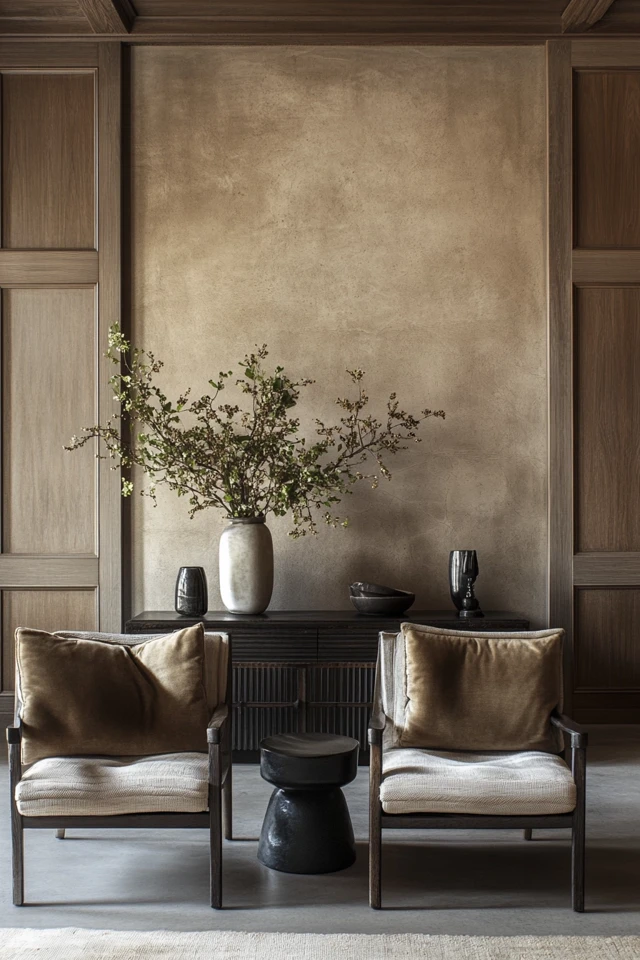Introduction
Symmetry is one of the most fundamental principles of design, and for good reason—it creates a sense of balance, harmony, and order that is naturally pleasing to the human eye. Whether it’s a perfectly arranged set of pillows on your sofa or a pair of matching lamps flanking your bed, symmetry has the power to transform your space into a calming, cohesive sanctuary.
The first time I experimented with symmetry was in my dining room. I had a mismatched collection of chairs and an off-center chandelier that made the room feel chaotic. One weekend, I decided to rearrange everything, moving two identical chairs to the ends of the table and re-centering the light fixture. I even added matching vases on either side of the buffet table. The transformation was immediate—the room felt more polished, elegant, and put-together. That experience taught me that symmetry isn’t just about aesthetics; it’s about creating spaces that feel inviting and serene.
What’s great about symmetry is its versatility. Whether your style is traditional, modern, or somewhere in between, symmetrical arrangements can enhance any design. From architectural elements like windows and beams to decorative touches like artwork and furniture placement, symmetry is a tool that can bring structure and flow to your space. Let’s dive into how you can use symmetry to elevate your home and create a sense of effortless balance.
The Perfect Design for You
Symmetry is ideal for anyone looking to bring a sense of calm and order to their space. If your room feels disjointed or visually cluttered, symmetrical arrangements can provide a grounding effect. It’s also a great solution for those who love a classic, timeless look, as symmetry is a hallmark of traditional and neoclassical design.
Picture a living room where two identical sofas face each other, separated by a perfectly centered coffee table, or a bedroom with matching nightstands and lamps on either side of the bed. These symmetrical layouts create a sense of rhythm and flow, guiding the eye through the space while ensuring that no one element feels out of place.
Even in more eclectic or asymmetrical styles, you can incorporate symmetry in subtle ways. A balanced arrangement of decor items on a mantel or a pair of matching plants framing a doorway can add just enough structure to make the space feel cohesive without being overly rigid.
Picture Gallery
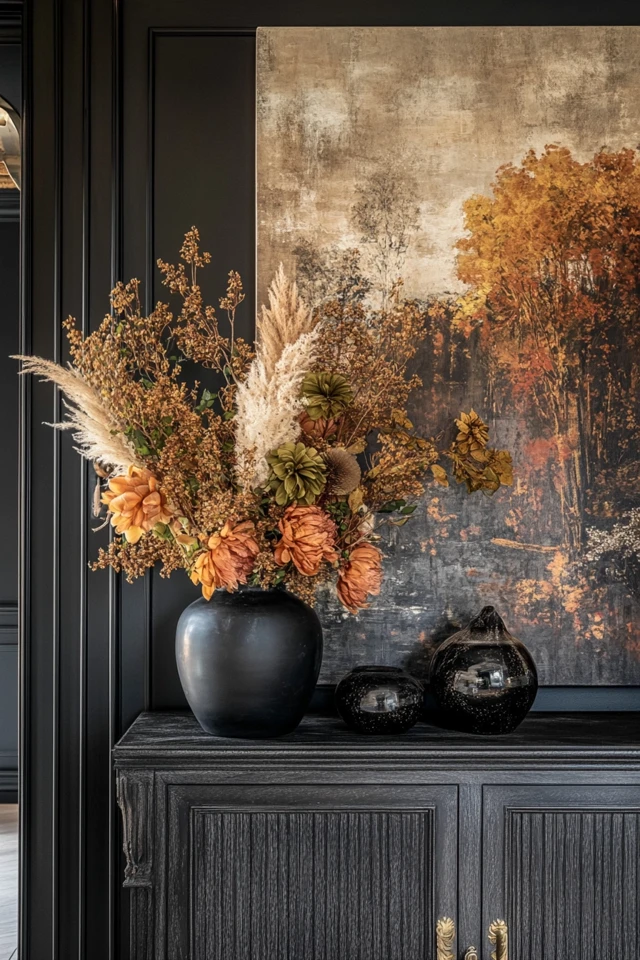
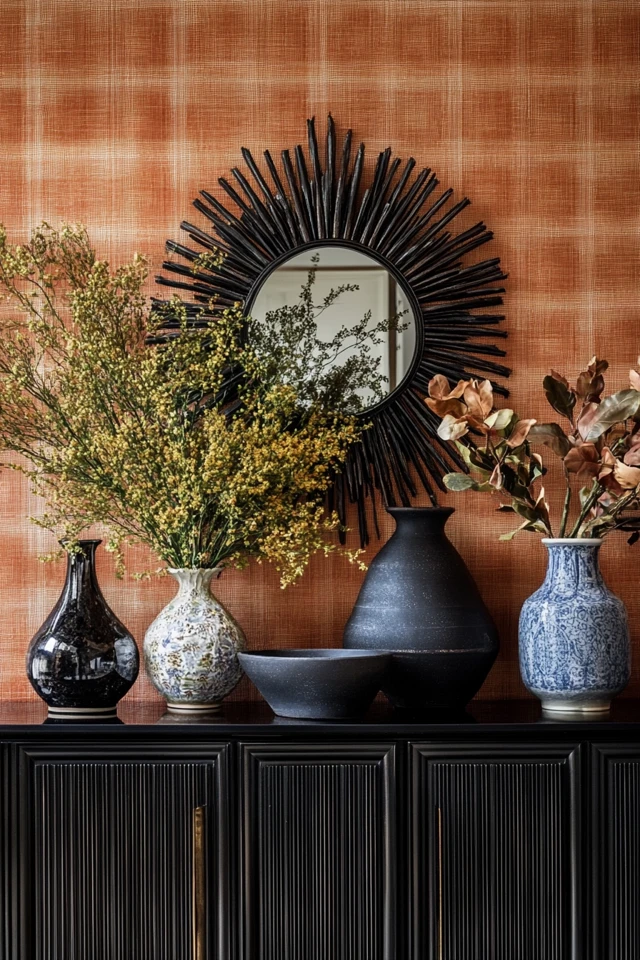

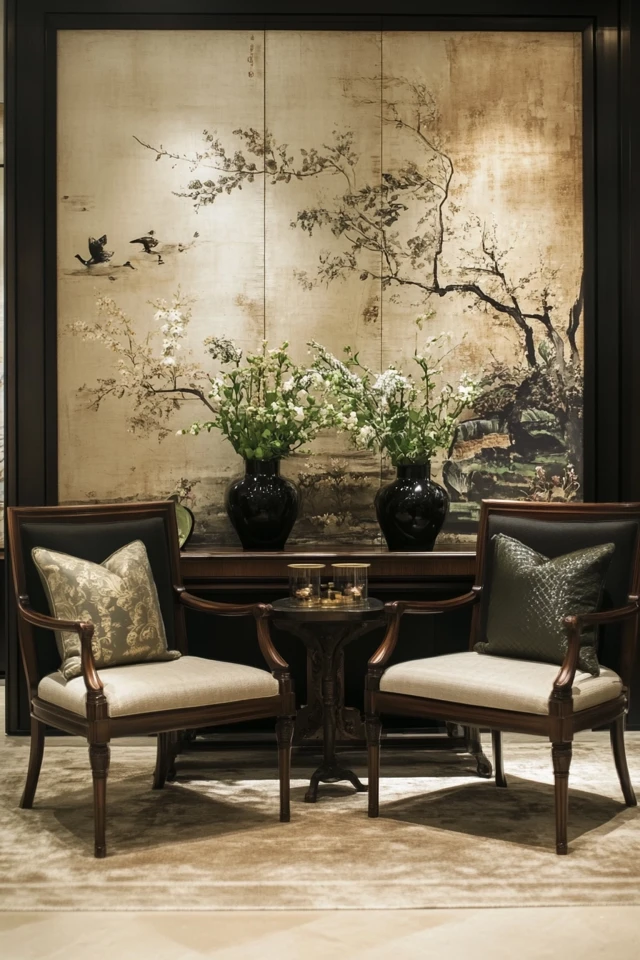
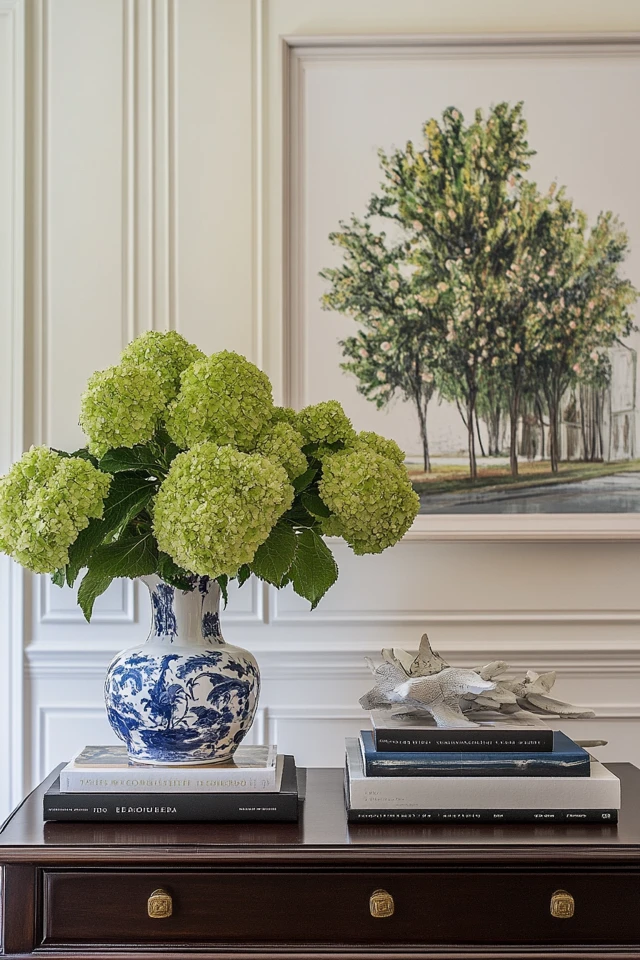
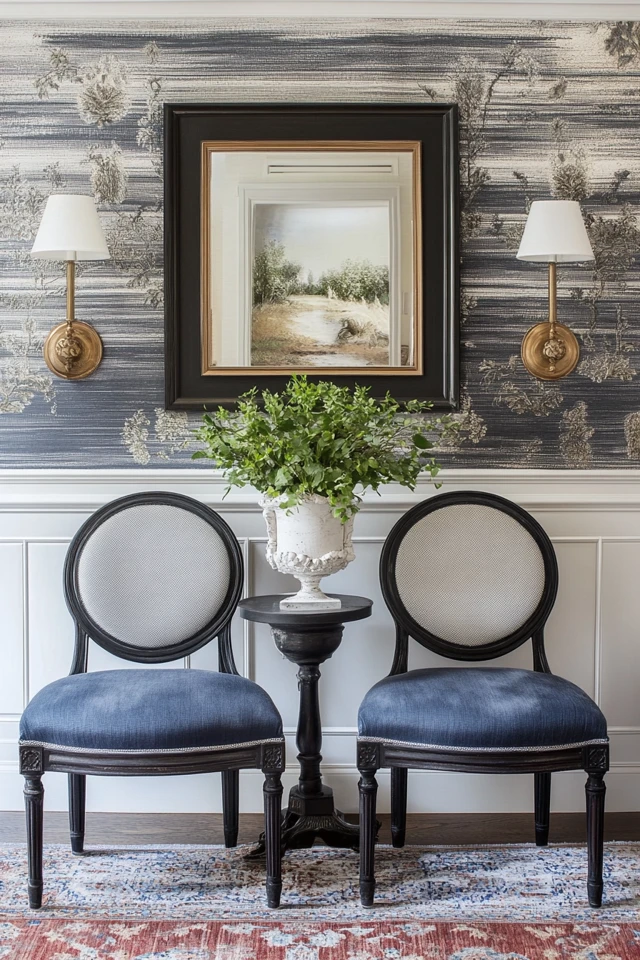
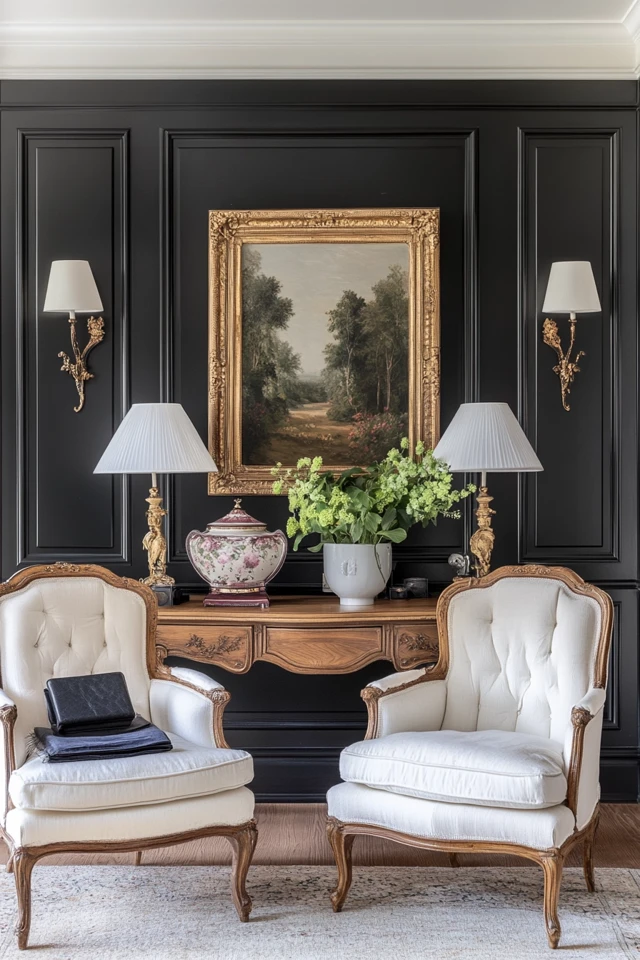
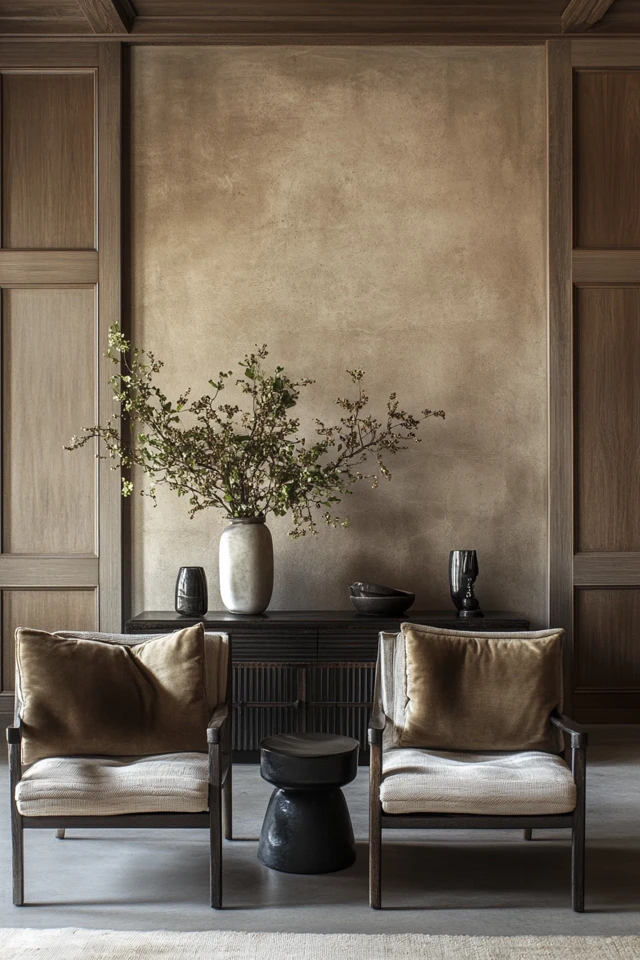
Why These Key Elements Work So Well Together
Symmetry works because it appeals to our innate preference for balance. When a room is symmetrical, it feels grounded and stable, which naturally puts us at ease. The key is to create a sense of equilibrium, even if the elements aren’t identical. Here’s why it works:
- Visual Balance: Symmetry distributes visual weight evenly across a space, making it feel more harmonious. For example, two armchairs on either side of a fireplace create balance, even if their colors or materials differ slightly.
- Guided Focus: Symmetry directs the eye to a central focal point, like a fireplace, bed, or dining table. This creates a clear hierarchy of design, helping the room feel organized and intentional.
- Flexibility: While perfect symmetry uses identical elements, you can also create asymmetrical balance by pairing items of similar size, shape, or color. This adds interest while maintaining harmony.
Evidence-based design shows that symmetry not only enhances aesthetics but also influences how we experience a space. Balanced layouts can make a room feel more spacious, orderly, and inviting, which is particularly useful in areas like living rooms, bedrooms, and entryways.
How to Use Symmetry to Bring Balance: Step-by-Step
1. Start with a Focal Point
- Choose a central element to build your symmetrical arrangement around. Common focal points include a bed, sofa, dining table, or fireplace.
- For example, in a living room, the fireplace might be your starting point, while in a bedroom, it’s often the headboard.
2. Identify Your Key Pairings
- Look for elements that can be mirrored or balanced on either side of the focal point. Examples:
- Matching nightstands and lamps in a bedroom.
- Two identical sofas or armchairs in a living room.
- A pair of framed artworks or sconces flanking a large mirror.
3. Create Balance Through Scale
- If you don’t have identical items, pair objects of similar size and visual weight. For example:
- A tall vase on one side of a mantel can be balanced by a stack of books topped with a smaller vase on the other side.
- A large piece of art on one side of a room can be balanced by two smaller pieces on the opposite wall.
4. Use Symmetry in Furniture Placement
- Arrange furniture in pairs or balanced groupings. Examples:
- In a dining room, position identical chairs on either side of the table and center a chandelier above it.
- In a living room, place a sofa opposite two armchairs, with a coffee table in the middle.
5. Layer Accessories Symmetrically
- Add smaller decor items like pillows, candles, or plants in a symmetrical pattern. For instance:
- On a console table, place two identical lamps on each end, with a centered piece of art or mirror behind them.
- Use pairs of throw pillows on a sofa, with a centered arrangement of books or a tray on the coffee table.
6. Embrace Architectural Symmetry
- Highlight existing architectural features, like windows or beams, by aligning furniture and decor with them. For example, if your room has two windows, position a piece of furniture like a sofa or desk centered between them.
FAQ
1. Is symmetry only for traditional design styles?
Not at all! While symmetry is a hallmark of traditional design, it can be adapted for modern, eclectic, or even minimalist spaces. The key is to balance elements in a way that complements your style.
2. What if my room has an asymmetrical layout?
You can still create balance by using asymmetrical symmetry. Pair items of similar size, color, or shape, or use decor to visually balance uneven architectural features.
3. How can I use symmetry in small spaces?
Stick to smaller, paired items like identical wall sconces, matching nightstands, or a pair of planters. Symmetry can help make small spaces feel more organized and less cluttered.
4. Can I mix symmetry with asymmetry in the same room?
Yes! Symmetry can be the foundation, while asymmetry adds interest. For example, pair matching lamps on a console table but add an asymmetrical gallery wall above it.
5. What if I don’t have identical pieces for symmetry?
Use similar items instead, like two different-sized vases in the same color, or balance a tall lamp with a stack of books on the opposite side of a table.
Variations
- Minimalist Approach: Use clean lines and a neutral color palette to create symmetrical arrangements with simple, identical pieces like matching chairs or lamps.
- Maximalist Flair: Layer multiple symmetrical groupings, such as pairs of furniture, artwork, and decor, for a bold, dynamic look.
- Rustic Style: Embrace natural textures and materials with symmetrical elements like wooden beams, matching wicker baskets, or paired pottery.
- Budget-Friendly Options: Create symmetry with affordable decor, like thrifted mirrors, DIY wall art, or repurposed items like matching jars or candleholders.
- Eclectic Balance: Combine mismatched items with similar colors or shapes to achieve a balanced yet eclectic look.
How to Showcase It
- Seasonal Updates: Incorporate symmetry with seasonal decor, like matching wreaths or a pair of vases filled with seasonal flowers.
- Holiday Gatherings: Style a dining table with symmetrical place settings, matching candlesticks, or a balanced centerpiece.
- Everyday Living: Use symmetry to create calm, organized spaces for daily use, such as balanced bookshelves or a symmetrical bedroom setup.
- Post-Renovation Reveal: Highlight new architectural features with symmetrical furniture arrangements or decor.
Occasions to Feature It
- Dinner Parties: Wow guests with a symmetrical tablescape featuring matching tableware, candles, and florals.
- Relaxing Nights In: Create a cozy, balanced living room with paired lamps, cushions, and throws.
- Housewarming Events: Impress visitors with a symmetrical entryway arrangement, like matching side tables and a centered mirror.
- Everyday Functionality: Use symmetry in your home office to create a focused, organized workspace.
Conclusion
Using symmetry in your space is one of the simplest yet most impactful ways to create balance, harmony, and visual appeal. Whether you go for perfect symmetry or experiment with asymmetrical balance, this design principle can elevate your home and make it feel more cohesive and inviting.
From furniture arrangements to decor pairings, symmetry offers endless possibilities to enhance your design. Take the time to experiment, adjust, and personalize your approach to suit your style. With symmetry, you’ll create spaces that are not only stunning but also a joy to live in.

